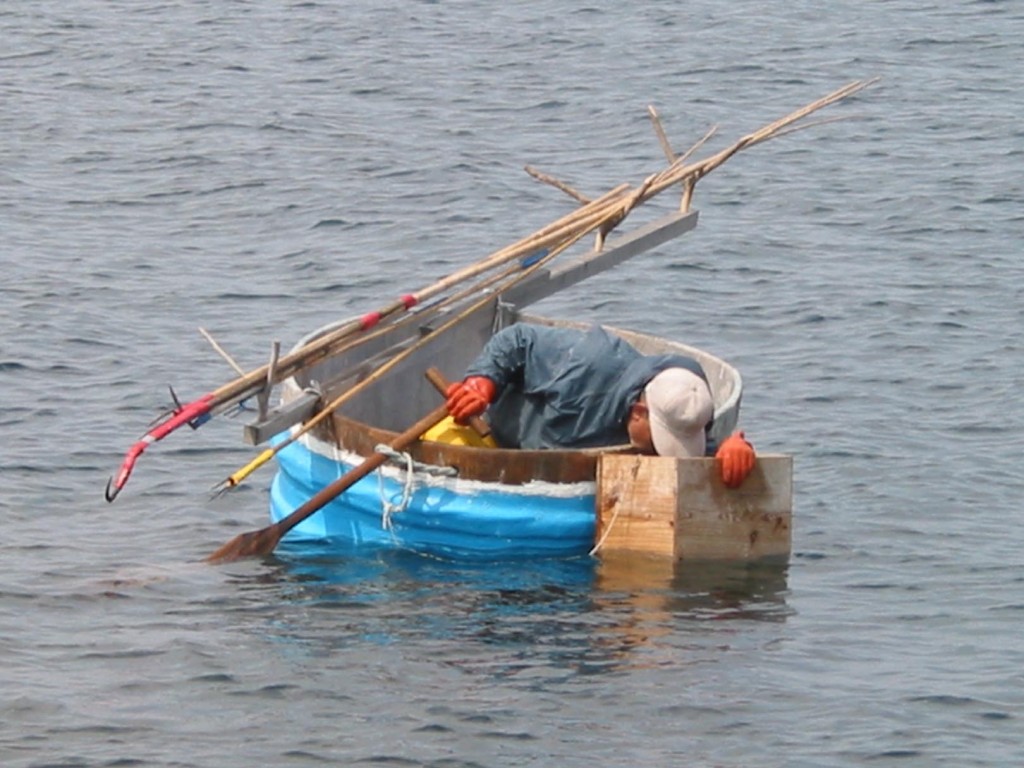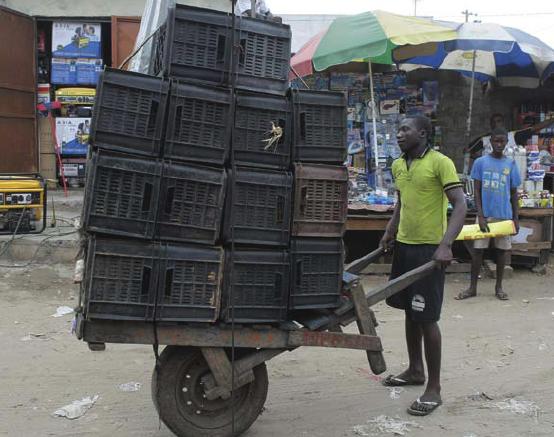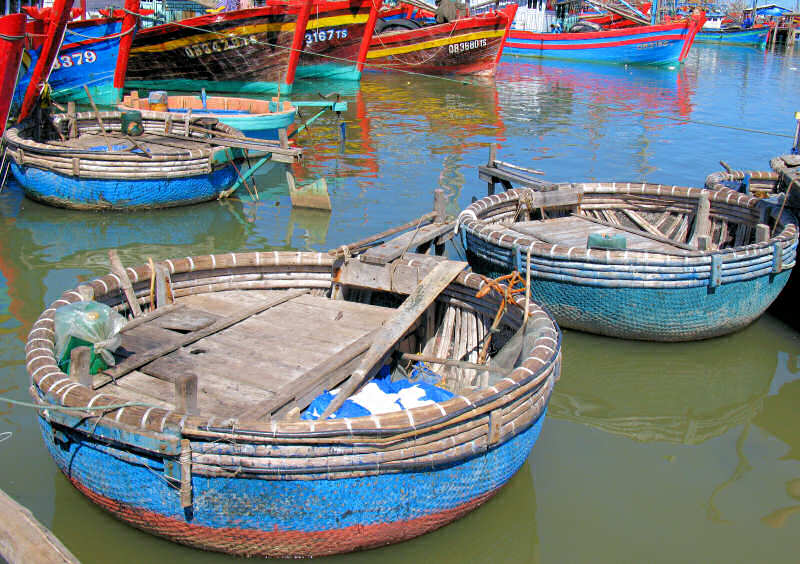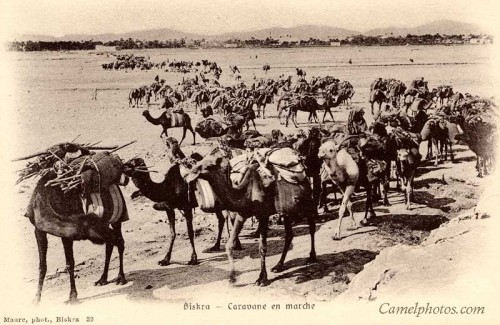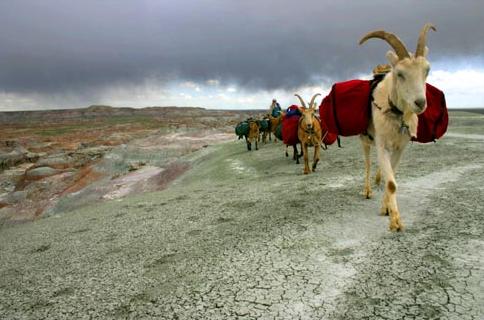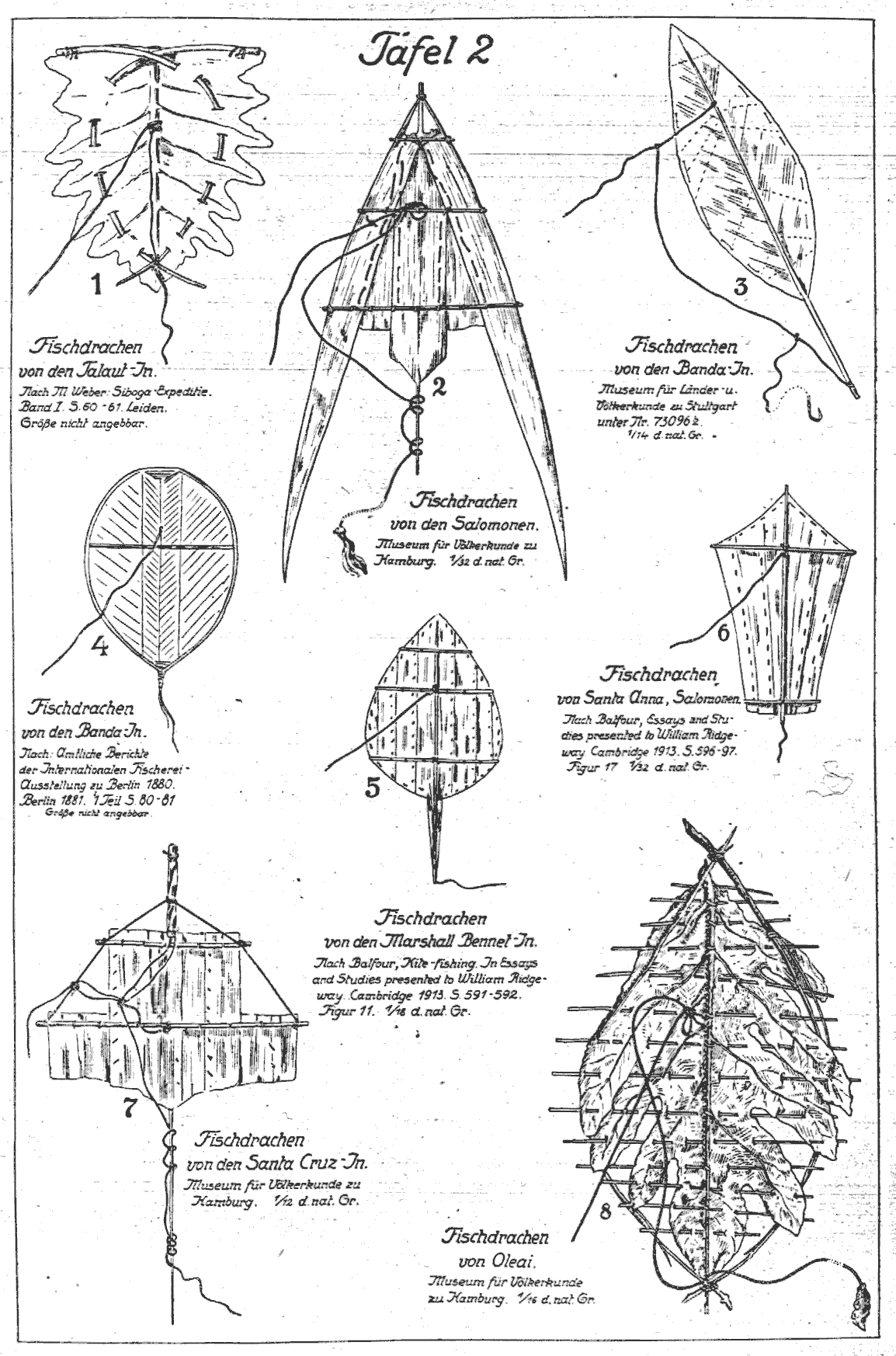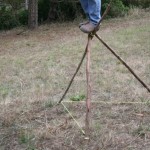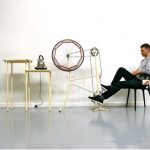“Taraibune (tub boats) were once found along the Echigo coast of the Sea of Japan and on Sado Island. Now they are used only in six small fishing villages on Sado Island. They have survived to the present because of their low cost and durability.”
“Tub boats are made of local sugi (Japanese cedar) and madake (timber bamboo). The woodwork in a tub boat is not at all beyond the skills of an experienced carpenter, but the braiding of the hoops is now an extremely rare skill.”
“Japanese tub boats are used for nearshore fishing and seaweed collecting. A key tool of the taraibune angler is the glass-bottomed box which is floated alongside the boat. This enables him (or more frequently, her) to clearly see the bottom in shallow water to identify likely prey or harvest. A variety of long-handled tools is trailed behind the boat — to collect the fish, shellfish, or vegetation at hand. Tub boats are propelled facing forward with a paddle, though in one village the men use outboard motors.”
“In spite of their ancient appearance, they date from only the middle of the 19th century. Prior to that, dugouts and plank-built boats were used to collect the rich shallow-water sea life around the southern tip of Sado Island, but in 1802 an earthquake changed the area’s topography, opening up a multitude of narrow fissures in the rocks along the shore into which it was impractical or dangerous to take long, narrow boats. Derived directly from the barrels in which miso is brewed, tub boats proved to be adept at navigating these narrow waterways. Indeed, they can be easily spun in their own length.”
More at Douglas Brooks Boatbuilder & Indigenous boats. Previously: The woorden work boats of Indochina.
